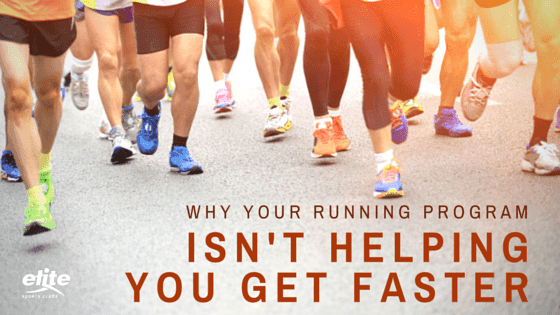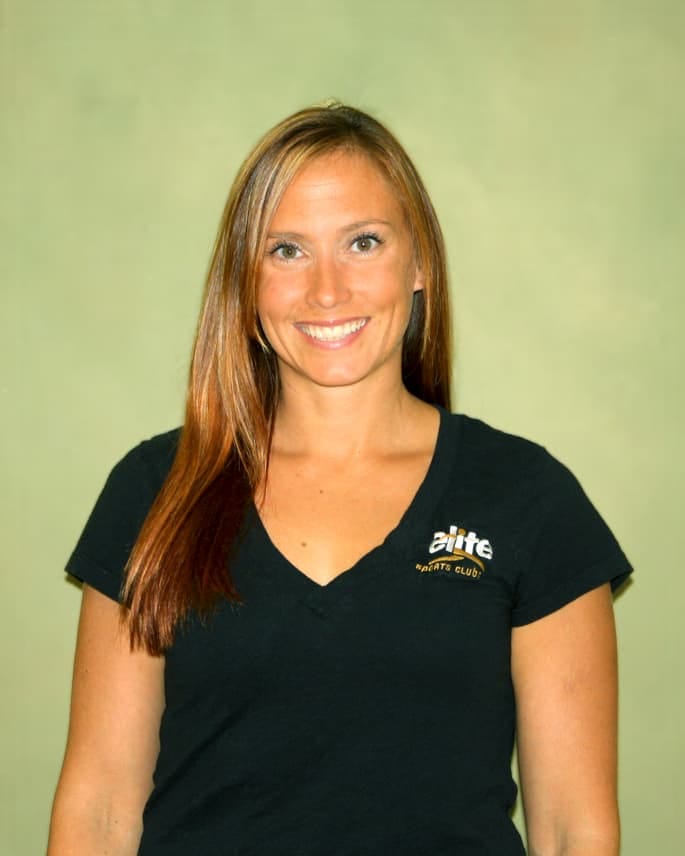
Running is a sport that is growing at a rapid rate. I think it’s wonderful that so many individuals are taking to the pavement and trails, setting goals and getting more active. As the trend grows, there’s no shortage of groups and clubs to help you get started. In fact, most any running store has a running club or group to help you prepare for an event, whether it be 5K, 10K, half or full marathon. This is a great place to start and keep motivated, as well as be held accountable for your goal.
As a trainer, I often hear, “I’ve done the 10K program the last 3 summers at the local running store, but I’m just not getting any faster.” I usually ask, if the running program consists of just building miles week to week, and the response being almost always, “yes.” Would you lift 10 pound dumbbells every week, then expect to magically perform the same lift with 30 pound dumbbells? Probably not. You know how to get stronger, you must push the boundaries and increase your workloads to improve. Running and other endurance sports require similar principles of training in order to see improvements in speed and stamina, in addition to a few additional components.
Your local running store program is a great place to get started, but if you want to improve on your times, there are several areas you should also focus on, without necessarily increasing your mileage.
Vary your intensity.
Just as lifting the same weight the same way won’t allow you to suddenly lift more, running the same distances and paces won’t yield faster times. You should divide your runs into various types of runs and intensities including a short and fast effort, a longer run at a moderately high intensity, as well as a longer and slower endurance run.
For your short and fast runs consider doing some sprint work and doing some all-out efforts. Sprint the distance from one light pole to the next, and jog the next two, then repeat. Sprints will help improve your speed overall! Also, don’t be afraid of the hill! Choosing a hilly course or route will help build your aerobic capacity and improve leg strength.
Consistency.
To improve your times and performance summer to summer, you must stay consistent and continue to run through the winter months. Yes, some time off is a good thing, and you can’t train at peak all year long, but you shouldn’t take so much time off that you spend most of your spring and summer re-building to where you were the previous year. Use the winter and off-months for your base building and cross-training to maintain your gains and hard work.
Strength Training and Plyometrics.
Strength training will improve the strength you already have and maintain your current muscle mass. It will also work to improve your muscular endurance and help to keep you safe from injury. It’s important to strengthen all areas of your body, not just your legs. As you fatigue, weak shoulders, back and core can quickly make you a sloppy and inefficient runner. Running is a dynamic exercise, a form of jumping. So, your training should also include plyometrics, or jumping and explosive exercises. If done correctly, you can expect to see improved running efficiency and race performance.
Yoga and Stretching.
There’s still some debate on stretching, but from experience, stretching is an important part of any program. Yoga stretches and poses are a great way to to stretch your body, as well as develop balance and become more in-tune with your body and it’s movements. A body that is flexible often times performs better, recovers more quickly, is less injury-prone, and simply feels better. Of course, always stretch warm muscles, after you have already warmed up, and after your workout.
 By Melissa Radmer, Group Exercise & Fitness Director at Elite Sports Club-West Brookfield
By Melissa Radmer, Group Exercise & Fitness Director at Elite Sports Club-West Brookfield
Melissa Radmer has been a part of the Elite Sports Clubs team since 2002 and is now the Fitness & Group Exercise Director at the West Brookfield location. She holds a BS in Exercise Physiology and Exercise Leadership, as well as certifications as a personal trainer, Les Mills instructor, spinning, zumba, pilates and gravity training. She has a passion for multi-sport and endurance events, including half-marathons, triathlons, and the infamous Tough Mudder. Her main areas of focus are sports performance training, cardiovascular programming, and post-injury training.
Get Started! Tell us about your goals!